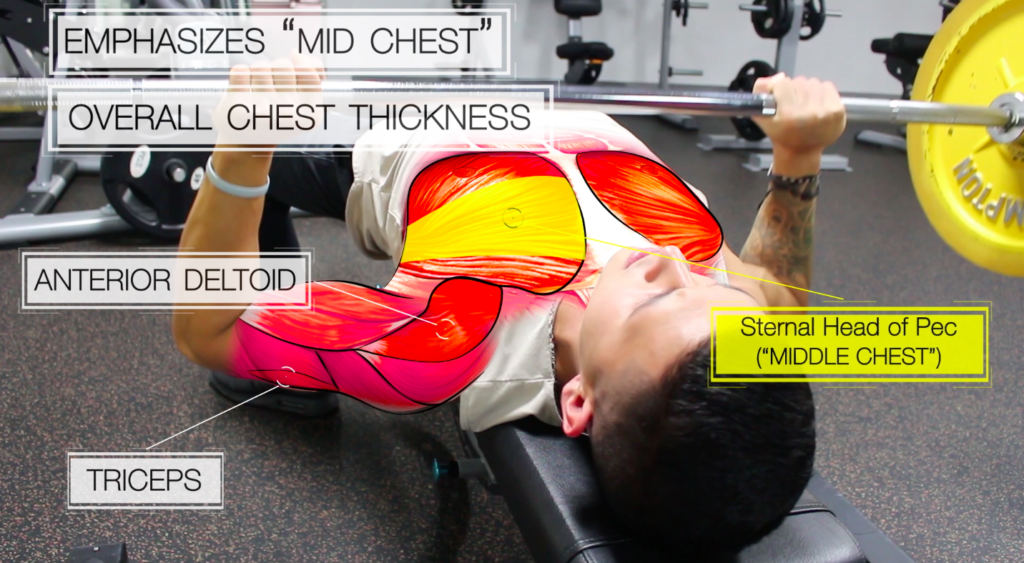Bench Press - Proper Technique and Exercise Execution

Bench press is probably the best known basic exercise. Even the biggest discopumper, who consistently refrains from squats and deadlifts, has free bench presses in the program.
Bench press is THE exercise for the pressure muscles of the upper body.
The following muscles are trained:
Pectoralis muscle (pectoralis major)
Anterior shoulder muscle (deltoid anterior)
Triceps (triceps brachii)
Stabilizing: Latissimus dorsi, rotator cuff, abdominal muscles, trapezius.
The wider the grip, the more the chest and shoulder muscles are stressed. With a tight grip, the triceps performs relatively more work.
Bench Press: The right execution
The barbell:
For a heavyweight, always work without braces. Then you can let the weight slip sideways at any time. Or press in a power rack.
Location on the bank
Lie flat on the bench.
Place your feet flat on the floor - with an angle in the back of your knees of about 90 °. This is a guideline. Most important is a stable position, which is ensured by your foot position.
The feet remain flat on the ground.
Make a light hollow cross and pull your shoulders behind you. The head, the shoulders and the butt remain in contact with the bank. Your whole body should be under tension and provide a stable basis for the moving weight.
Grip - wrists and reach
The optimal reach depends on your biomechanics (how long are your limbs, how extensive your chest) and your goal. As already mentioned, the broader the grip, the more the chest and shoulder muscles are stressed. With a tight grip, the triceps performs relatively more work.
A good compromise is shoulder width + a hand width.
The thumb encloses the barbell.
The wrists must be kept straight, so the palm and forearm in a line!
starting position
Take a deep breath, then lift the weight out. With little experience and / or weight is always recommended a "Spotter".
Keep your arms pressed. This is the strongest position and you are not wasting strength on the actual exercise.
The pole is directly above you. Your arms are perpendicular to the ground.
Pull your shoulder blades together, creating a stable surface on the bench.
Descending phase

Lower the bar slowly and in a controlled manner. Target area is the lower end of your chest muscles (3-7 cm below the nipple). Seen from the left side, the pole denies a path like a "J" with very weak lower bows. Simplified, one could also describe the path of the pole with a "/". Look at the video below for the right way of the pole and the white "J" in the picture below.
The final phase of the descent is a contact with the body. There is no "bouncing", ie bouncing and springback of the pole. However, the rod does not have to rest long, a short contact is sufficient.
The lowest position

Your upper arm should be approximately at a 45-75 ° angle to your body side. Depending on arm length and chest height, this angle may vary slightly.
In the deepest phase, your forearms should be at right angles to the ground (from the back - see picture above - and from the side - see picture below). If not, your grip is either too wide or too tight.
Your elbows should be directly under the bar. Keep your wrists straight.
Ascending phase
Press the pole explosively upwards. The goal is to return to the starting position described above.
The "lockout"
The "lockout" occurs when you are back in the starting position (arms outstretched, at right angles to the ground). Then you can tilt the weight back into the holder. For this, the bracket must be in the correct height.
0 Comments